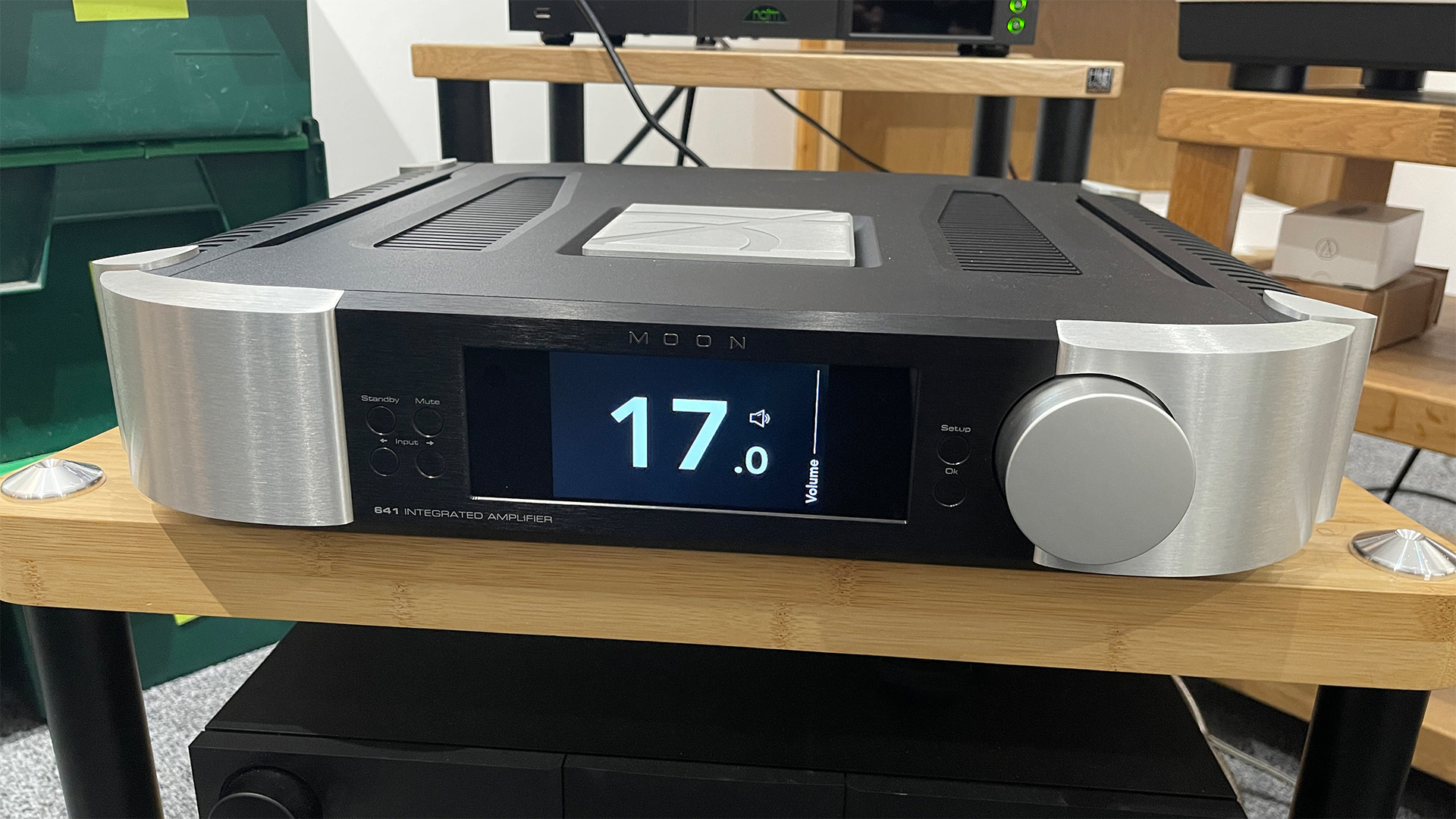What Hi-Fi? Verdict
A wonderfully capable amplifier that delivers a combination of great build, smart appearance and capable sound
Pros
- +
Refined and insightful nature
- +
Excellent composure and detail
- +
Musically cohesive performance
- +
Terrific build and remote
Cons
- -
No headphone output or phono stage
Why you can trust What Hi-Fi?
Integrated amplifiers become increasingly rare as price points rise. That makes sense given that there are invariably compromises involved when packing both a preamp and power amplifier with the partnering power supply in the same box.
When spending car money, any idea of compromise should be the last thing on the menu, yet here we have Moon’s new 641 integrated amplifier sitting on our equipment rack trying to convince us that it is worth every penny of its £11,000 / $11,000 / AU$19,000 price tag.
Moon created quite a stir when it introduced its North Collection of high-end products earlier this year. The name celebrates the company’s Canadian heritage and the collection is made up of three tiers of components with each tier comprising two products.
The starter 600 series level consists of a music streamer (the 681) and the 641 integrated amplifier we have on test here. The top tier 800 series products come in at approximately double the price and split the signal path differently, by offering a streaming preamp (the 891) and dedicated power amplifier (861). The middle-ranking 700 series echos the 800 series components but at a lower price. While Moon has long made high-end products, the introduction of the North Collection is still a bold statement of intent and firmly pushes its focus upmarket.
Features
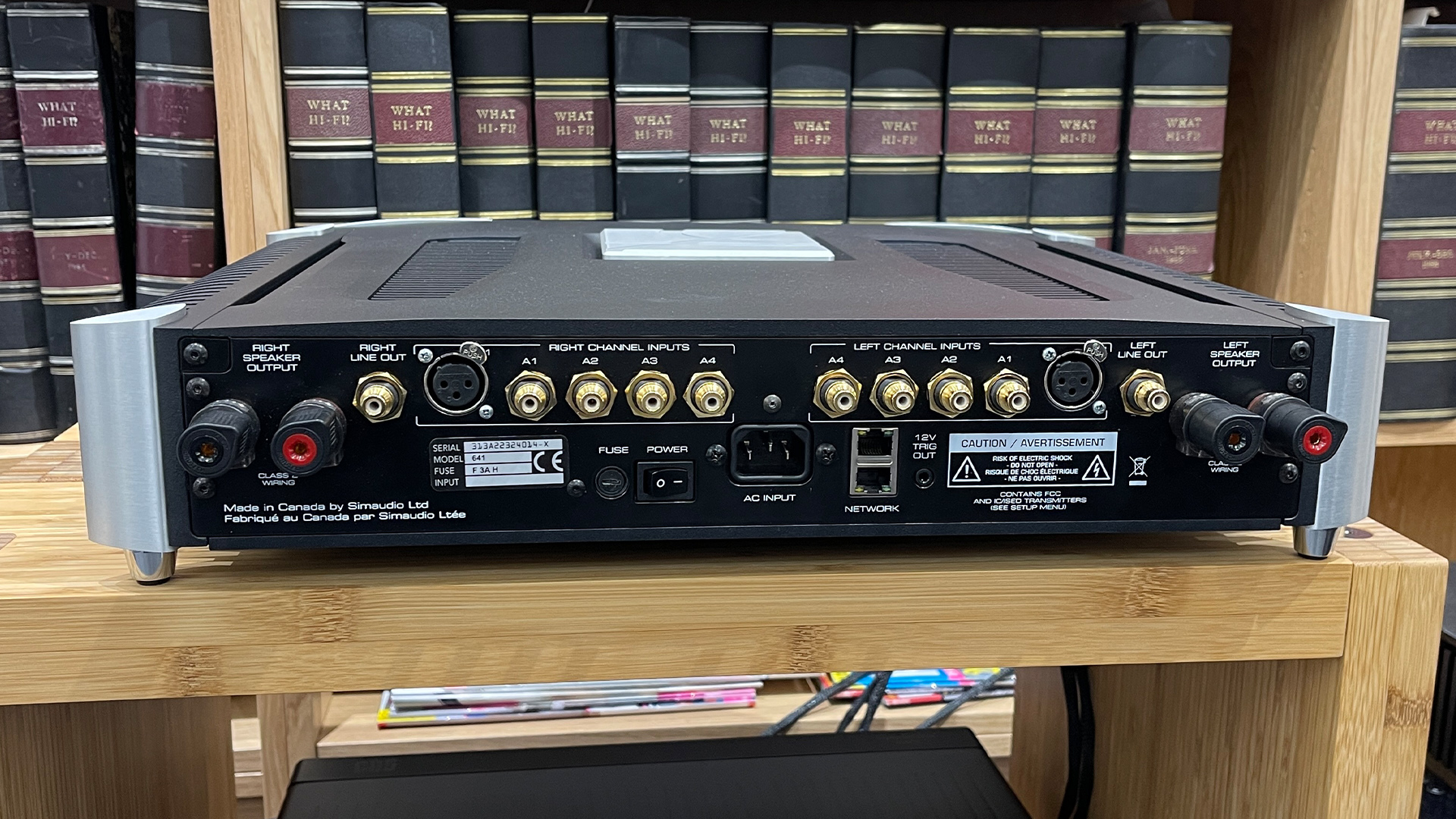
If you are expecting the full bells and whistles approach from the collection’s only integrated amplifier then the 641 is going to disappoint you. This is purely a line-level device with no digital inputs, phono stage or headphone output. Bluetooth? Not on the menu either, which is a bit of a shame considering the way it would open up this amplifier for use across a wider range of sources.
Of course, we recognise that not everyone will want all of these features and those who want them can always add additional boxes to do those jobs. But, we feel that a huge part of the appeal of an integrated design is to have the neatness and convenience of everything in one box, making it ideal for those who want to minimise general clutter and the mess of connecting wires. The moment a manufacturer expects the customer to add extra boxes, that consumer might as well have gone for the more purist separate pre/power approach in the first place.
That said, as far as line-level integrateds go, the 641 will slot into most systems without an issue. On the back panel, there are four single-ended line-level inputs alongside a balanced XLR option. There is also a switchable line-level output that can be used to feed a separate power amplifier for those who feel the 641’s healthy 125 watts per channel isn’t quite enough, or that output can be configured for full line-level operation to feed, say, a recorder of some sort.
Build & design
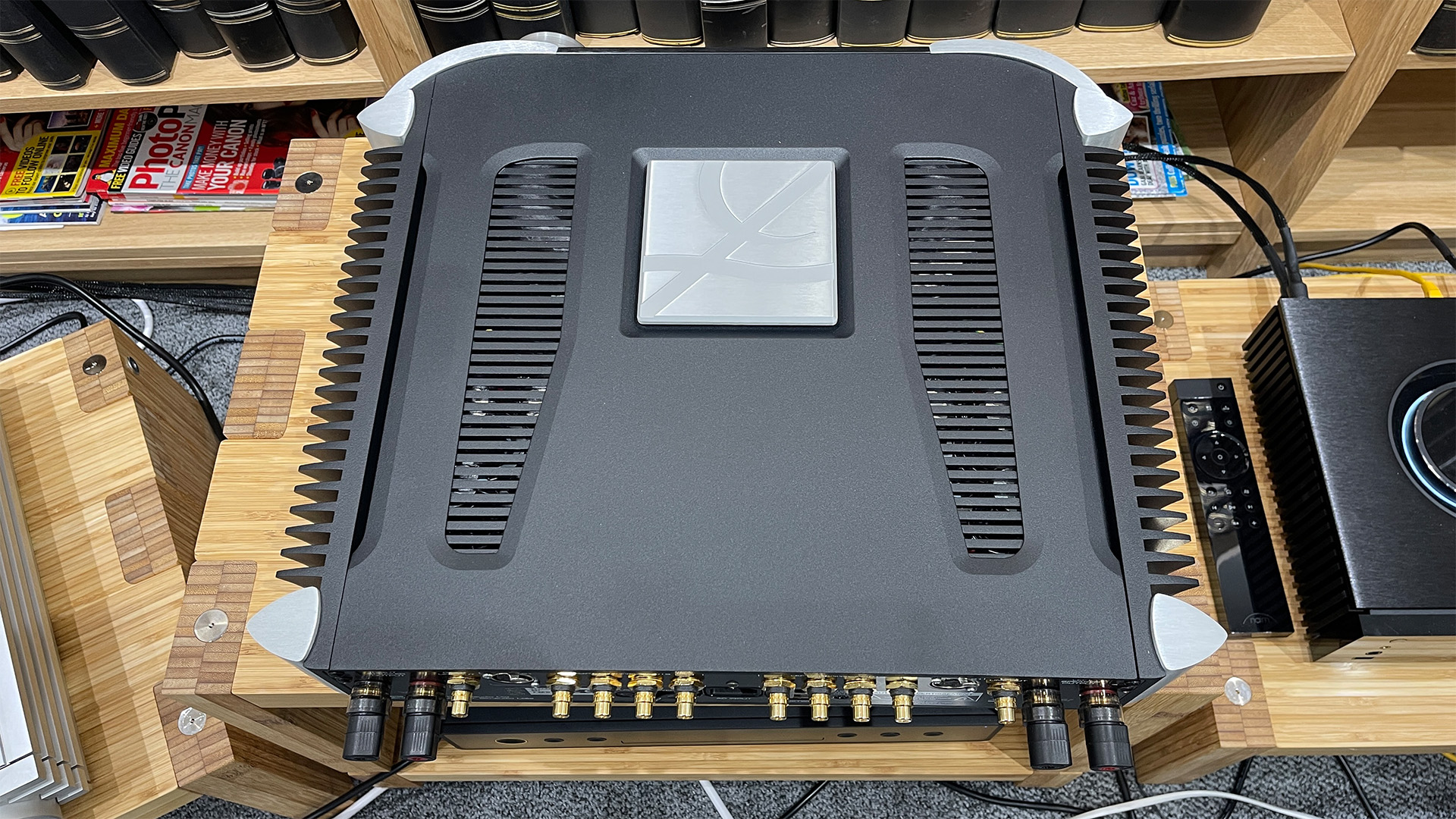
We like the Moon’s speaker terminals. There is a single pair per channel and they feel suitably chunky and premium, totally avoiding the more glitzy jewellery-type appearance of many that we see. This is but one example of the seriousness with which Moon has developed the 641’s design. Look inside and you will find the neatly laid-out circuit is arranged in a symmetrical dual mono arrangement where the left and right channel circuits are split all the way to having their own power supply with a dedicated toroidal transformer. That goes some way to explaining the amplifier’s hefty 26kg shipping weight.
There are many advantages to a dual mono arrangement from minimising any unwanted interactions between the components of each channel, improving all aspects of sound quality, to optimising stereo imaging. Such an approach isn’t cheap to do, which is why it is only ever seen at more premium prices.
The engineers have had another look at how the volume control works and have come up with a solution that is claimed to improve sound quality and maintain exceptional channel balance regardless of the volume level chosen, something traditional potentiometer-based designs don’t do so well.
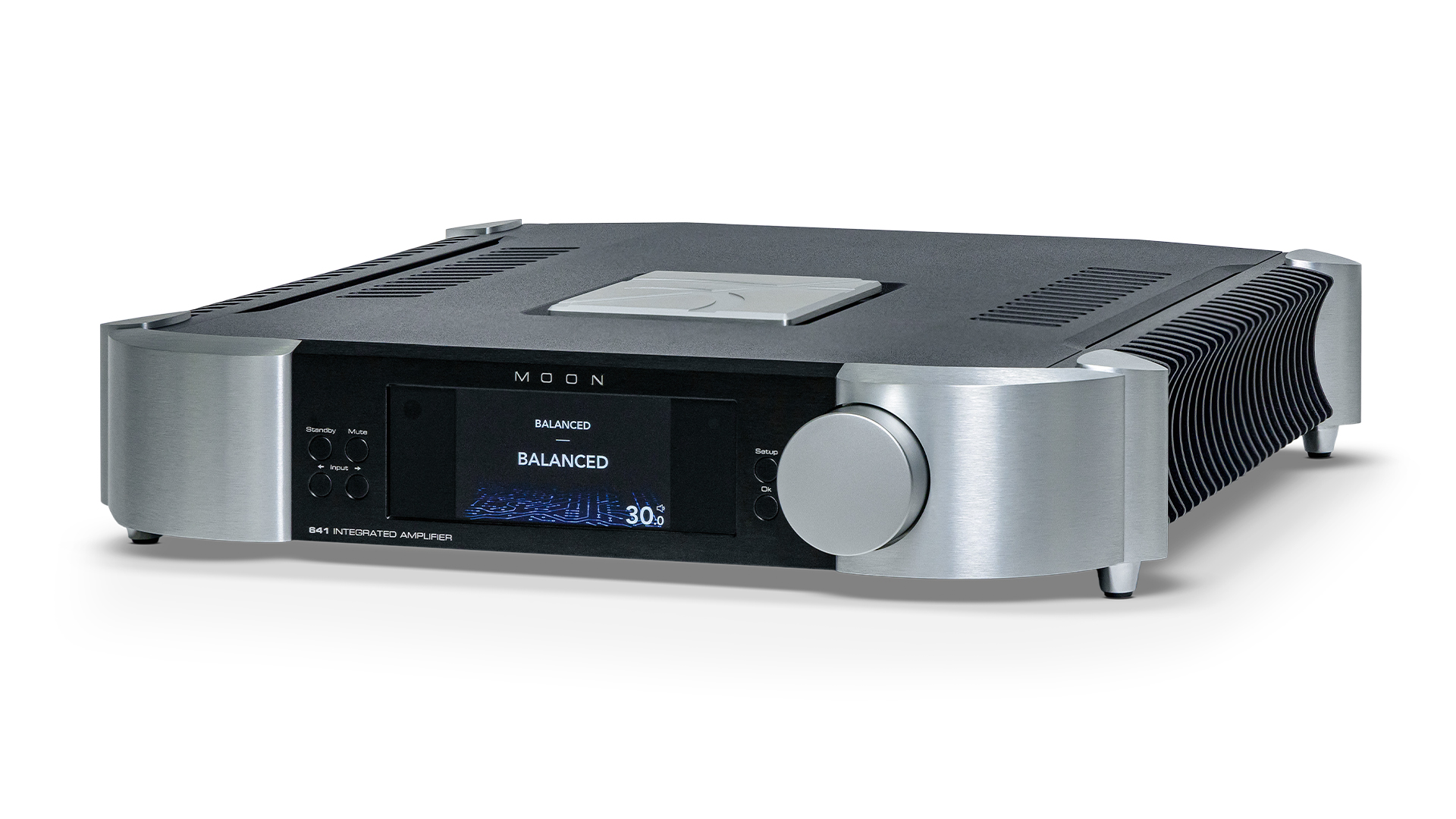
Type Integrated
Power 125 watts per channel
Phono stage? No
Line level inputs Single ended x 4, balanced XLR x 1
Output Switchable line-level/preamp
Bluetooth? No
Headphone? No
Dimensions (hwd) 48 x 10 x 47cm
Weight 26kg
Finishes x 1
There is nothing to complain about when it comes to the 641’s build and finish, it is excellent, just as we would expect for the money. That classy casework is immensely solid and is designed to reduce the amount of external vibration that reaches the sensitive internal circuitry. We love the feel of the large rotary dial on the front, which works as a volume control and a navigational tool in the set-up menus and spins with a lovely smoothness. The large 4.3in colour OLED display on the front panel is crisp and clear. It remains easy to read from a distance and makes setting up a breeze.
We have to applaud Moon for the lovely BRM-1 remote handset supplied with the relevant North Collection products, too. While most rival manufacturers take the easy option and buy an off-the-shelf design, this dinky all-metal unit is one that the company has put a lot of work into. It is beautifully styled and a pleasure to use.
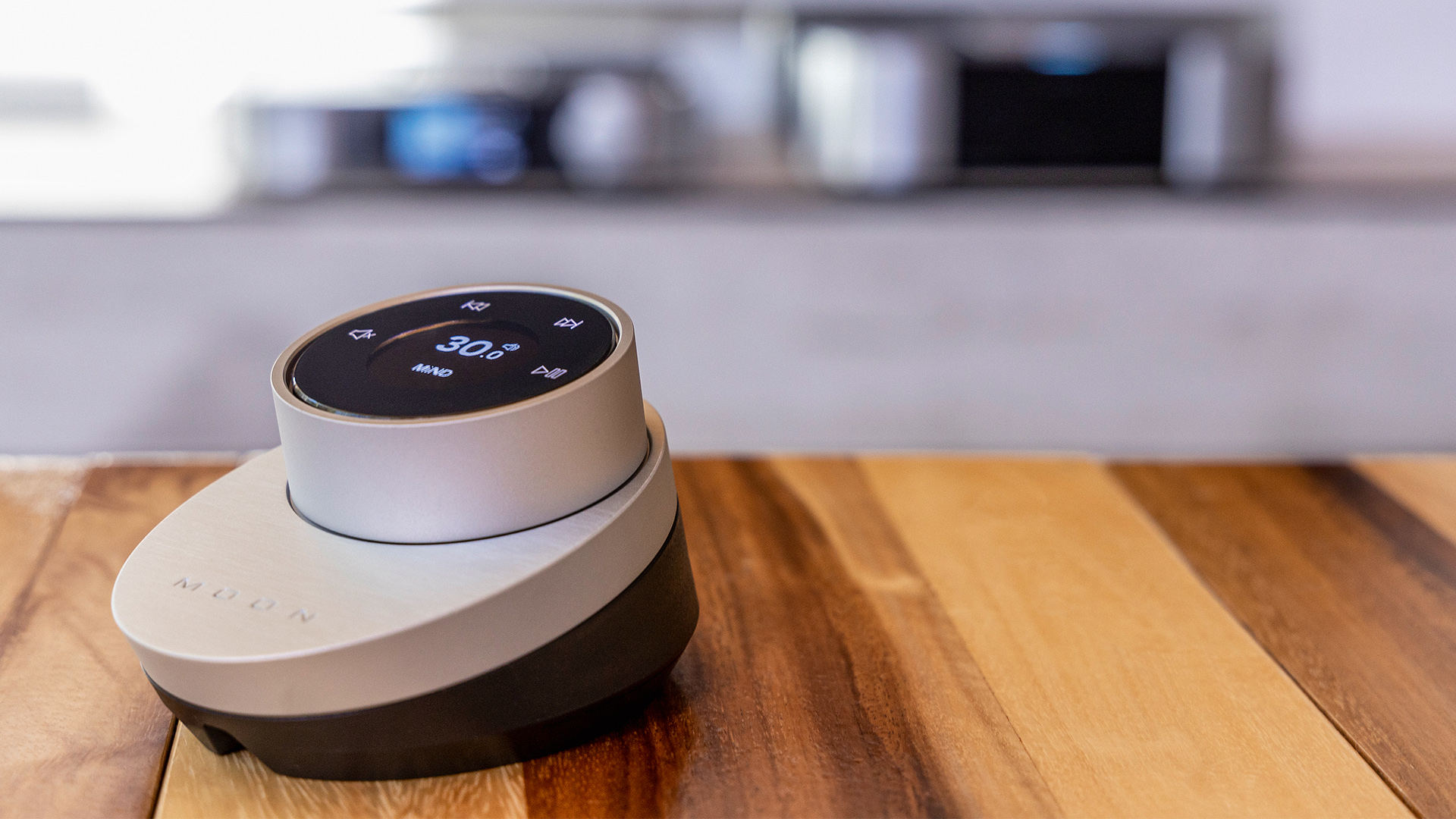
The BRM-1 features a small display at the centre of the volume dial that mirrors the volume setting shown on the main display and allows the listener to switch inputs and mute. Our very early sample has a small glitch where the volume indicator occasionally freezes on a number even though we changed the level and the amplifier has responded accordingly. Fortunately, this soon sorts itself out and doesn’t prove to be a serious annoyance in use. Even so, we hope Moon sorts out this issue soon.
Any amplifier at this level demands a top-class system to shine. Our main sources are Naim’s ND555/555 PS DR music streamer and the Technics SL-1000R/Kiseki Purpleheart record player via a Cyrus Phono Signature/PSX R2 phono stage. We have a range of speakers on hand including the ATC SCM50, Wilson Benesch’s A.C.T. 3Zero floorstanders and PMC’s new Prodigy 5 towers. As far as cables go, we use suitable premium options from Chord and Vertere Acoustics.
Sound
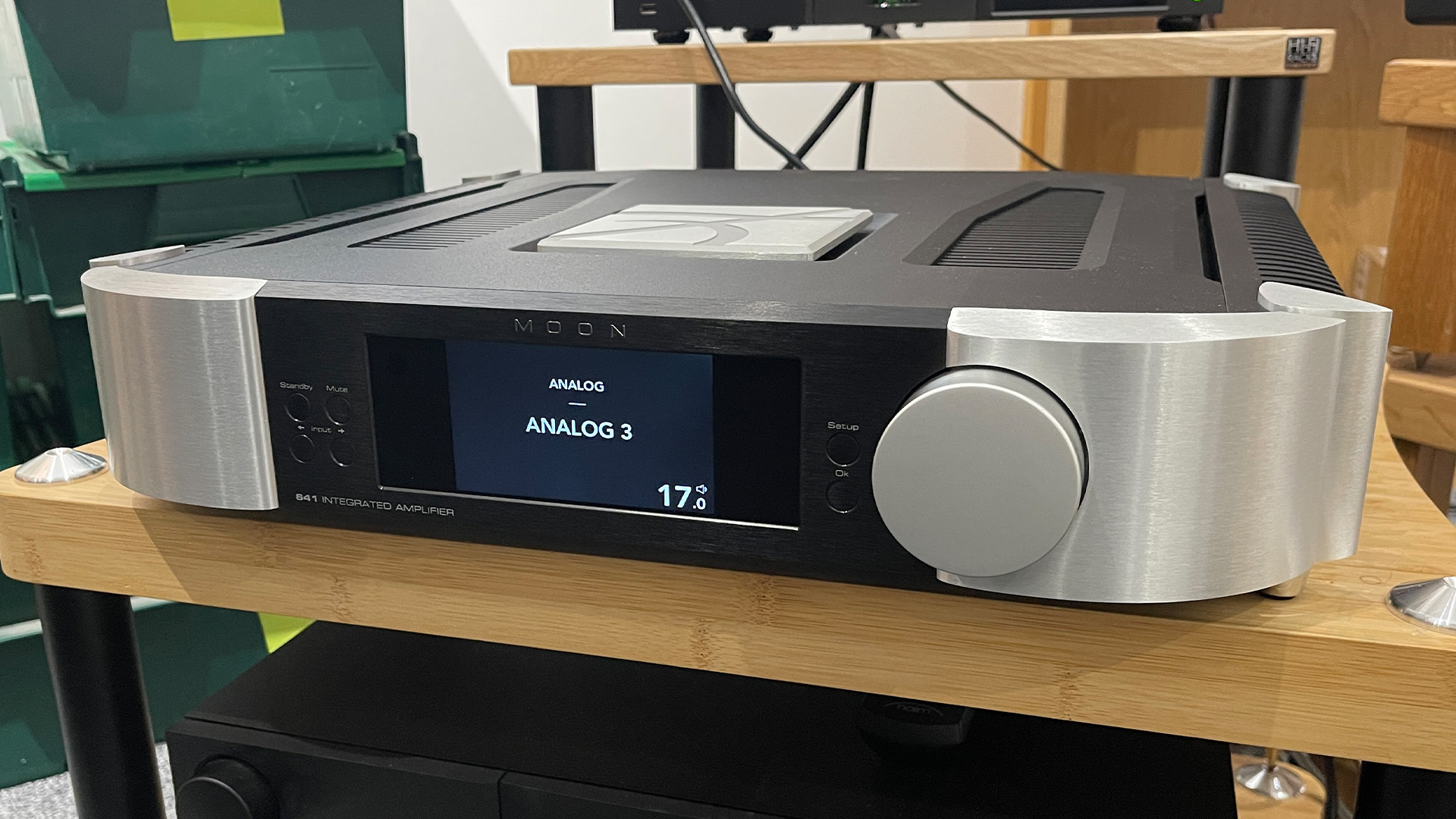
Once fully warmed and stable, the 641 turns in an excellent performance. It has all the smoothness and fluidity that we’ve come to associate with Moon’s products but delivers a level of resolution and insight that puts it at the leading edge at this level. Massive Attack’s Heligoland is a fine showcase for the 641’s talents. As we listen to Paradise Circus it is clear that the amplifier is resolving a huge amount of detail. All this information is presented in an unforced way and organised into a musically cohesive whole. We love the way the amplifier’s open and insightful midrange delivers vocals; there is plenty of texture and the 641 communicates any emotion well.
There is plenty of finesse on show and it is coupled with a huge amount of muscle. The 641’s power output is rated at 125 watts per channel into 8 ohms, but that’s only half the story. That figure doubles as the load impedance halves, which means that there is plenty of grunt on tap to drive any price-compatible speaker to high levels. There were numerous times in our listening sessions where we gave up before the amplifier did; its sound still as composed as you like.
This muscularity can be heard in other ways too, in grip and authority shown with low bass notes and the 641’s general air of confidence. Rhythmically it is on solid ground, sounding surefooted and enthusiastic when the music demands. Songs such as Paradise Circus are rendered with their drive and musical momentum intact, which means that the entertainment factor stays high.
We change things up by having a listen to an old favourite in the form of My Head Is An Animal by Of Monsters And Men, and the Moon continues to shine. It communicates the album’s infectious energy brilliantly, capturing the fun and emotion of the various tracks well. This shift of gear shows the 641’s innate transparency and its ability to change character with the music being played.
Tonally, things are even and balanced. While the Moon doesn’t sound wholly neutral to us (its presentation is a touch smoother and sweeter than is ideal), this character makes the amplifier more accommodating of poor recordings or any aggression in the partnering system. This OMAM album has a rough and ready feel to the production and that's readily apparent through the Moon but it never over-emphasises the shortcomings of the recording. This unfussy nature counts for a lot considering the amount of great music that happens to be poorly recorded.
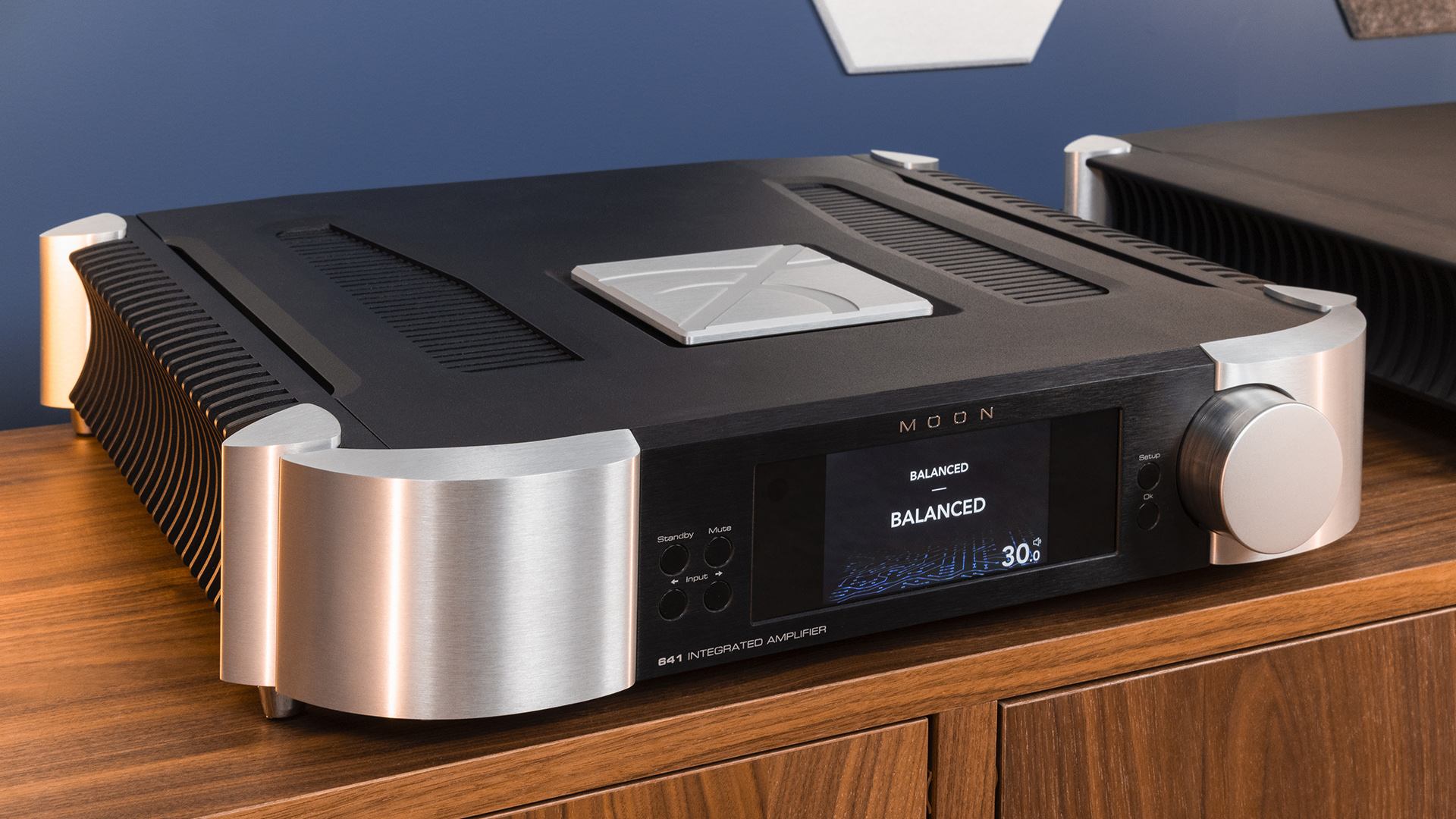
As we switch to Dvořák’s New World Symphony it becomes clear that the 641 is also capable of rendering a soundstage with huge scale. The benefits of the dual mono circuit shine through with the amplifier’s impressive stereo imaging, with its excellent depth and width. Instruments are layered convincingly and remain tightly focused, even when the music becomes demanding. There is a combination of stability and control in the 641’s presentation that can’t help but impress.
This classical piece allows the Moon to stretch its metaphorical legs, showing off its ability to track large-scale dynamic shifts while displaying enough delicacy to render the nuances with skill. This Moon integrated merges finesse and force better than any rival we have heard at this level, and that’s no easy task.
Over the course of this review we try a wide range of music from Tracy Chapman’s quiet and intimate Let It Rain to With Teeth by Nine Inch Nails, filling the gap with the likes of Etta James and Louis Armstrong, and the Moon 641 never lets us down. It is a superb all-rounder with an easygoing character that allows it to slot into a wide range of systems with ease.
Verdict
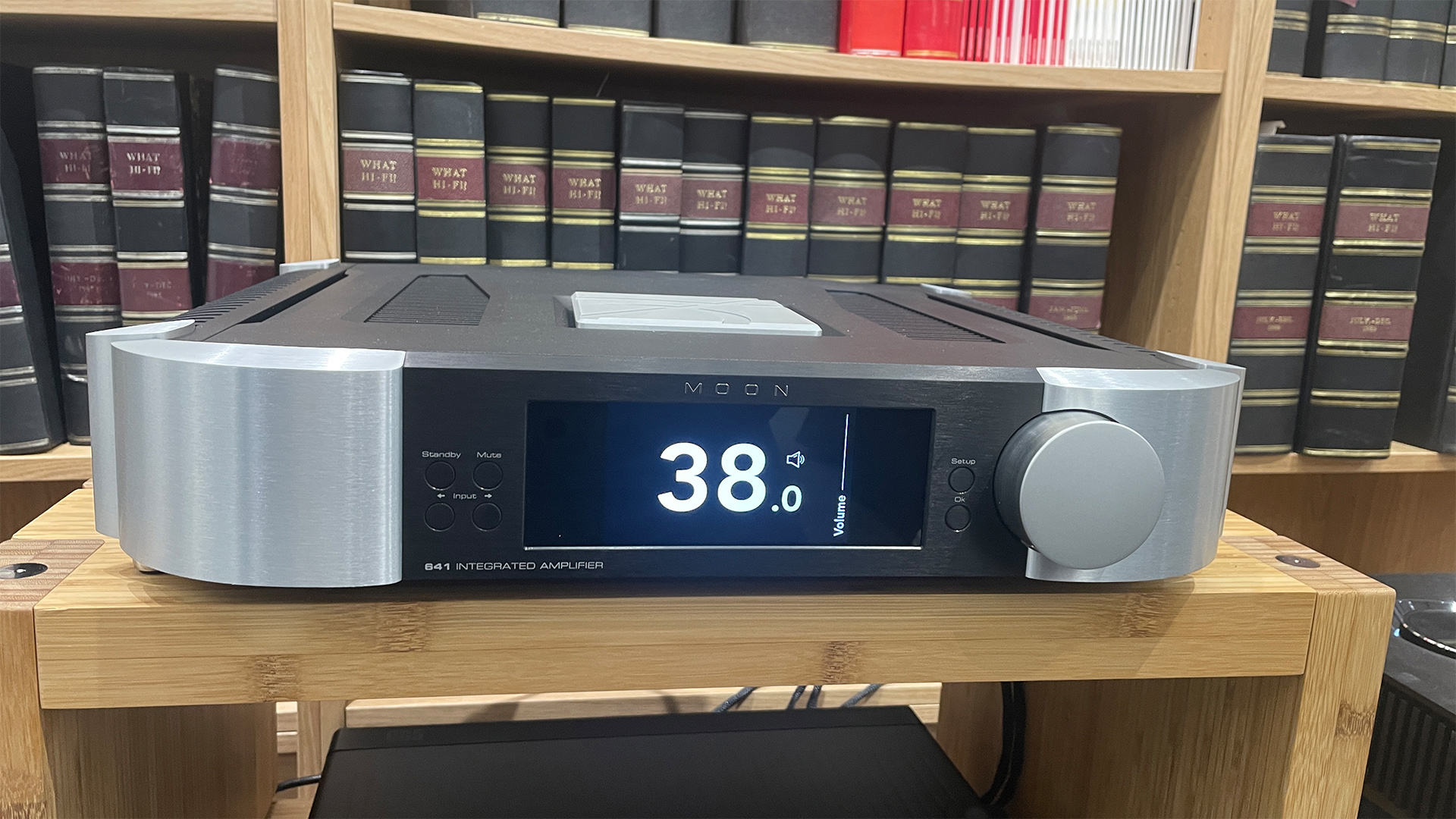
The Moon 641 amplifier’s feature count might be sparse but the combination of excellent build and hugely capable sound quality puts it among the best we’ve reviewed at this level. Highly recommended.
SCORES
- Sound 5
- Build 5
- Features 3
MORE:
Read our review of the PMC Cor
Also consider the McIntosh MA8950
Our pick of the best stereo amplifiers you can buy
What Hi-Fi?, founded in 1976, is the world's leading independent guide to buying and owning hi-fi and home entertainment products. Our comprehensive tests help you buy the very best for your money, with our advice sections giving you step-by-step information on how to get even more from your music and movies. Everything is tested by our dedicated team of in-house reviewers in our custom-built test rooms in London, Reading and Bath. Our coveted five-star rating and Awards are recognised all over the world as the ultimate seal of approval, so you can buy with absolute confidence.
